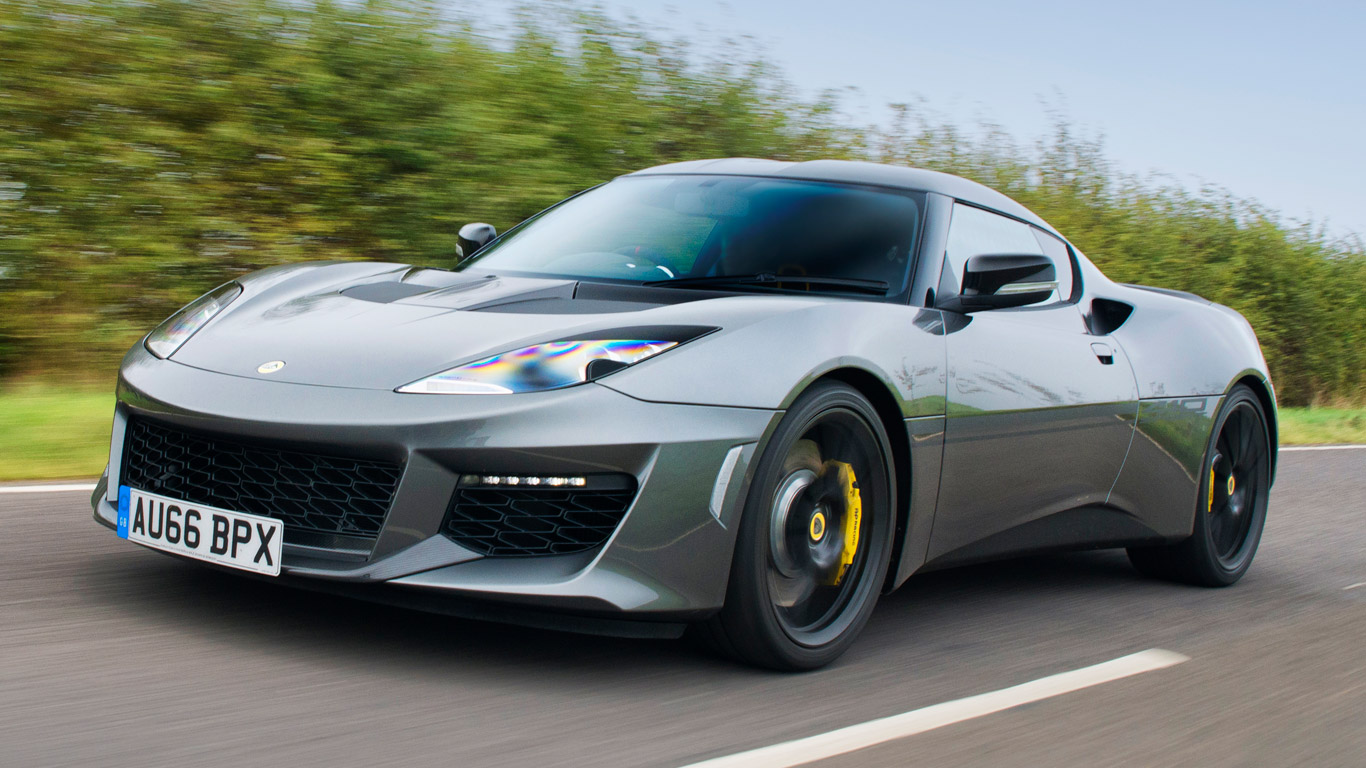
Don’t dismiss the Lotus Evora 410 as just an Evora 400 with an extra 10hp. Revealed at this year’s Geneva Motor Show, Lotus has applied founder Colin Chapman’s philosophy of “simplify, then add lightness” to the Evora sports car. We’ve been to the firm’s Norfolk factory to find out whether it’s a successful formula.
- Lotus Evora 400 review: 2015 first drive
- Read another car review on Motoring Research
Hit me with some stats
The Evora 410 is powered by the usual 3.5-litre supercharged V6 producing – you guessed it – 410hp. A muscular 302lb ft torque means it’s open to lazy third-gear track driving, while working through the gears allows you to hit 62mph in 3.9 seconds. That’s 0.3 seconds faster than the Evora 400.
What about weight?
So, that low-weight thing that Chapman was so keen on. An extra 70kg has been shaved off the already-lightweight Evora 400, with a number of carbonfibre panels used – including the roof, rear quarter panels (where you’d find glass on the regular Evora 400) and the tailgate. The result is a dry weight of 1,270kg.
Crucial kilos have been saved all over the place. For example, a super-lightweight lithium-ion battery knocks a considerable 11.3kg off the total mass, while 5.5kg of sound insulation has been stripped out. Even scrapping the mudflaps saved 0.7kg – and the badges on the rear of the car have been replaced by stickers.
Does it feel that fast?
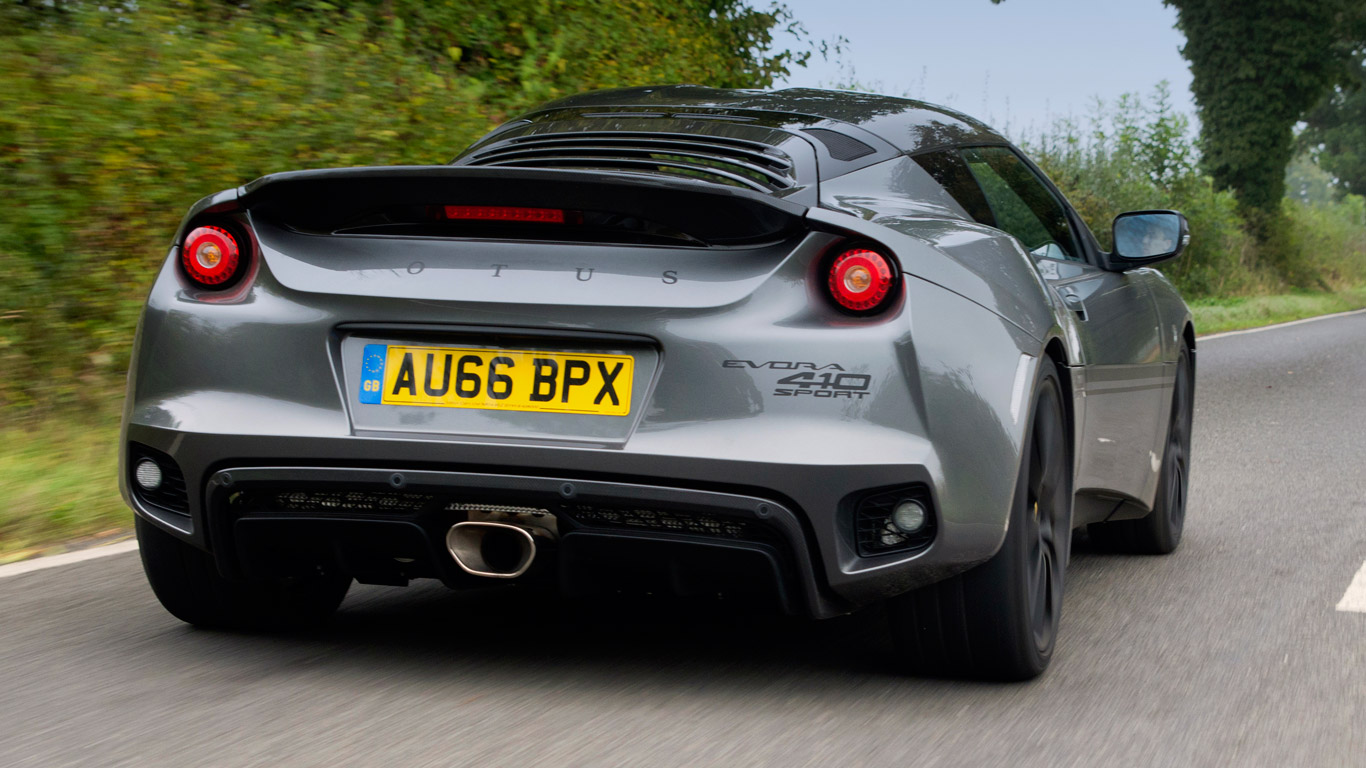
Yes, ludicrously. You’ll have to spend close to £127,000 on a 911 Turbo before you can buy a Porsche that reaches 62mph as quickly as the Evora 410. There’s next-to-no lag when you stamp on the accelerator, while the noise combined with the steering feedback takes you back to a time when analogue sports cars were commonplace.
Does it sound good?
Does it ever? If you want to treat your ear drums on a daily basis, don’t even consider a Porsche 718 Cayman when you can buy one of these instead. “Sound is a priority for us,” said Lotus CEO Jean-Marc Gales with a smile on his face during the press conference ahead of our Evora 410 drive.
Baffles in the exhaust can be opened or shut using a button on the dash – while those wanting even more noise can opt for titanium pipes. Unnecessary, we expect, but then who cares? It could be the best-sounding car this side of an Aston V8.
Is it scary to drive on the road?
Surprisingly, not at all. Despite being a high-powered, mid-engined Lotus, it’s easy to make progress in the Evora 410. The rack-and-pinion steering tells you everything you could possibly need to know, and even the clumsiest of point-and-squirt drivers won’t find it a handful.
What about on track?
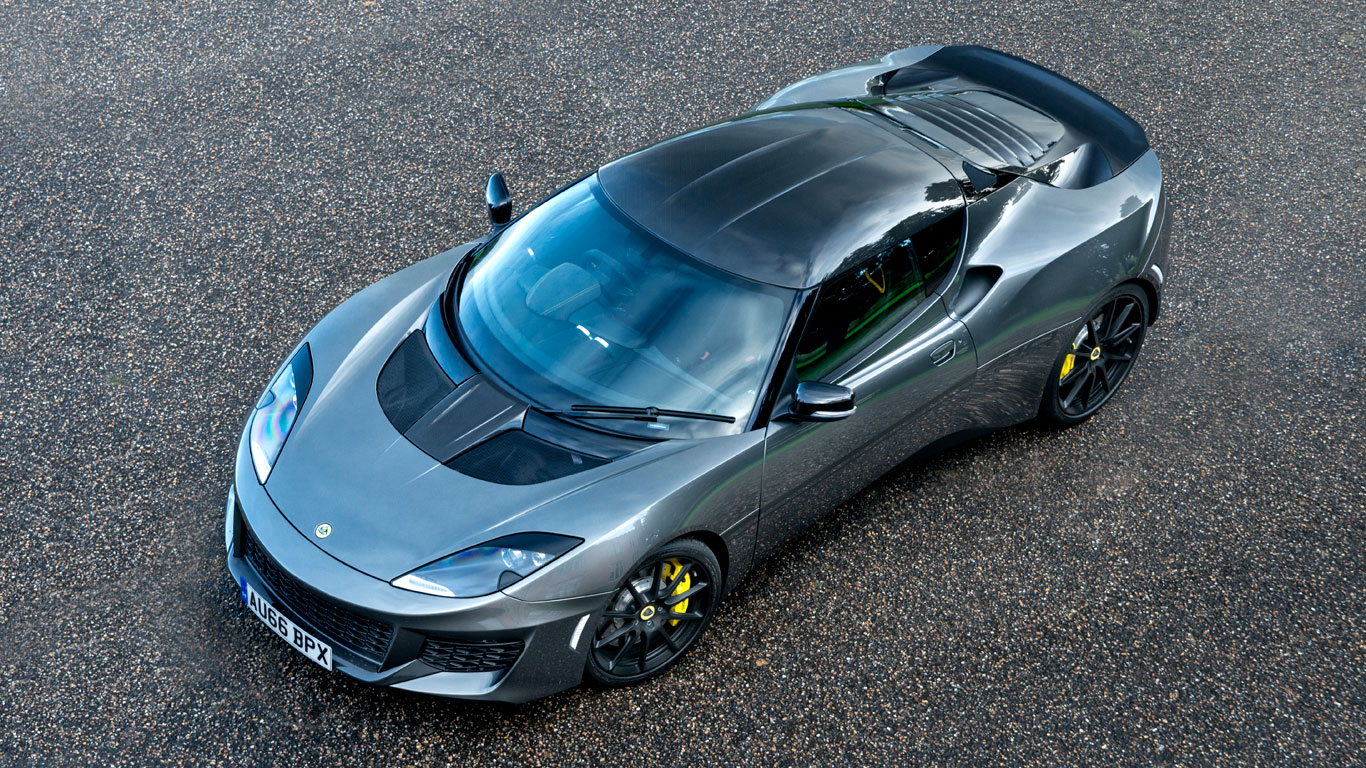
That docility transfers well to track. Lotus chucked us the keys and told us to go and have some fun on their test track – where we flicked between Normal, Sport and Race modes and tried to find out what the Evora 410’s like at the limit.
The answer? Fun, but not at all terrifying. Sure, it’ll squirm about a bit if you’re too hamfisted (although the ultra-grippy Michelin Pilot Sport Cup 2s fitted as standard prevent any serious sideways heroics). It’s easy to get into a flow of setting tidy lap after tidy lap, though. As a car that you can drive to a track day, show up exotica and then drive home again, the Evora 410 is one of the best.
What exactly do sport and race modes do?
Like most 21st century sports cars (indeed – most cars, full-stop), you can flick between different driver modes using buttons on the dash. These tweak the throttle response and allow you to play around more with oversteer before the traction control kicks in and kills the fun.
So how quick is it around Hethel?
We weren’t attempting to set any track records during our visit to Hethel, but Lotus says it’ll lap its test track in 1min 28sec. That’s three seconds quicker than a Lotus 400 – a huge chunk of time for an extra 10hp and added lightness.
Should I buy an automatic or manual?
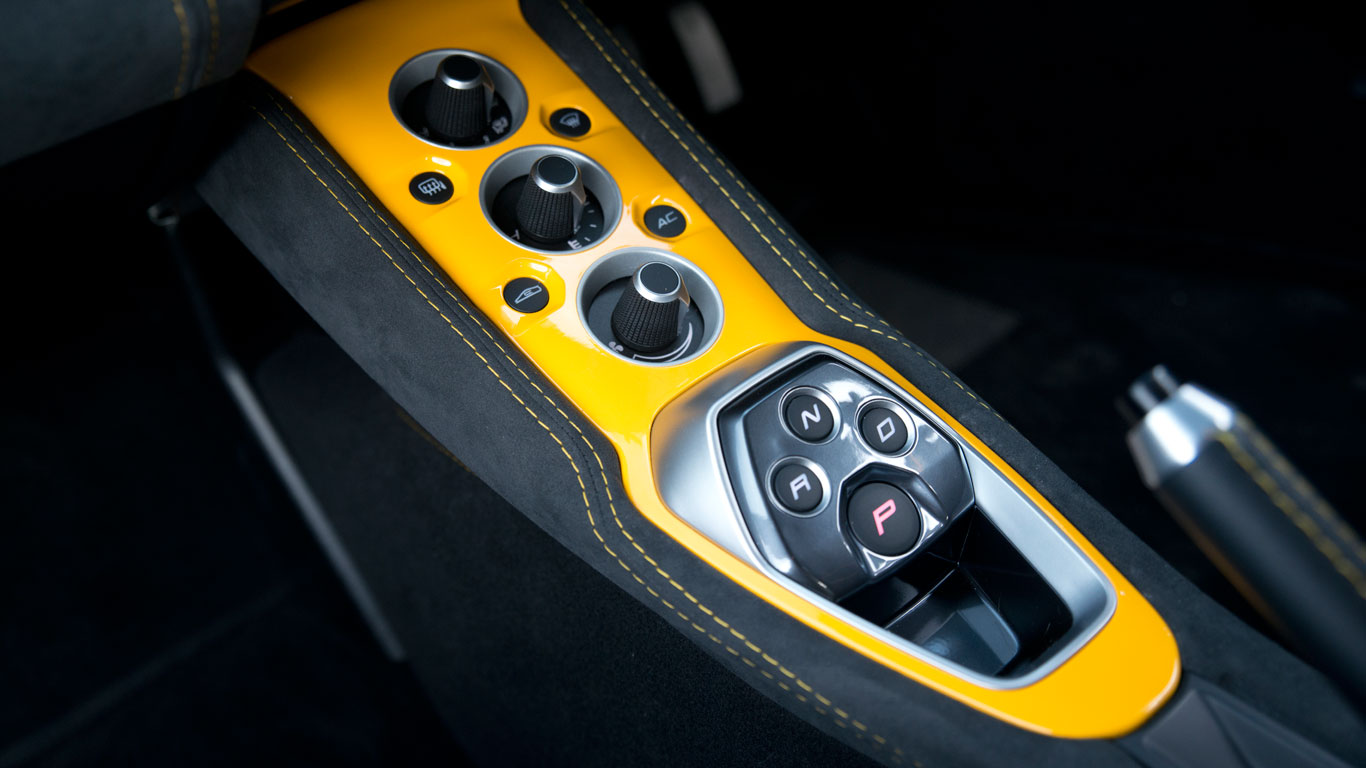
We drove a manual Evora 410 on track and spent some time on the road in an automatic version. The former is obviously the choice of keen drivers – working through the gears suits the ethos of the car, and the ’box is a lovely one to use.
But, in the nicest possible way, the six-speed automatic wasn’t as awful as we expected. It’s not as slick as a Porsche PDK gearbox, and changing through the gears using the steering-wheel-mounted paddles isn’t as fun as driving stick. But it will blip the throttle on downshifts when Sport mode is selected. It does little to disguise the performance available, too.
How firm is it?
Sitting 5mm lower than the Evora 400, you’d expect the 410 to be a trifle firm on bumpy British roads. And you’d be right. But it’s certainly bearable – soaking up bumps in a manner that means you don’t, unlike in many track-oriented cars, find yourself slowing down just because it’s becoming uncomfortable.
Is it practical?
Yes and no. For a start, there are only two seats, and you’ll miss creature comforts such as a radio (we’ll come to that shortly). Parking is tricky, too – replacing glass with opaque carbonfibre has that effect. But then, we found the race-derived seats to be surprisingly comfortable, and there’s a boot big enough for a weekend bag or two. It’s certainly more liveable-with than, say, an Elise.
Tell me more about the interior…
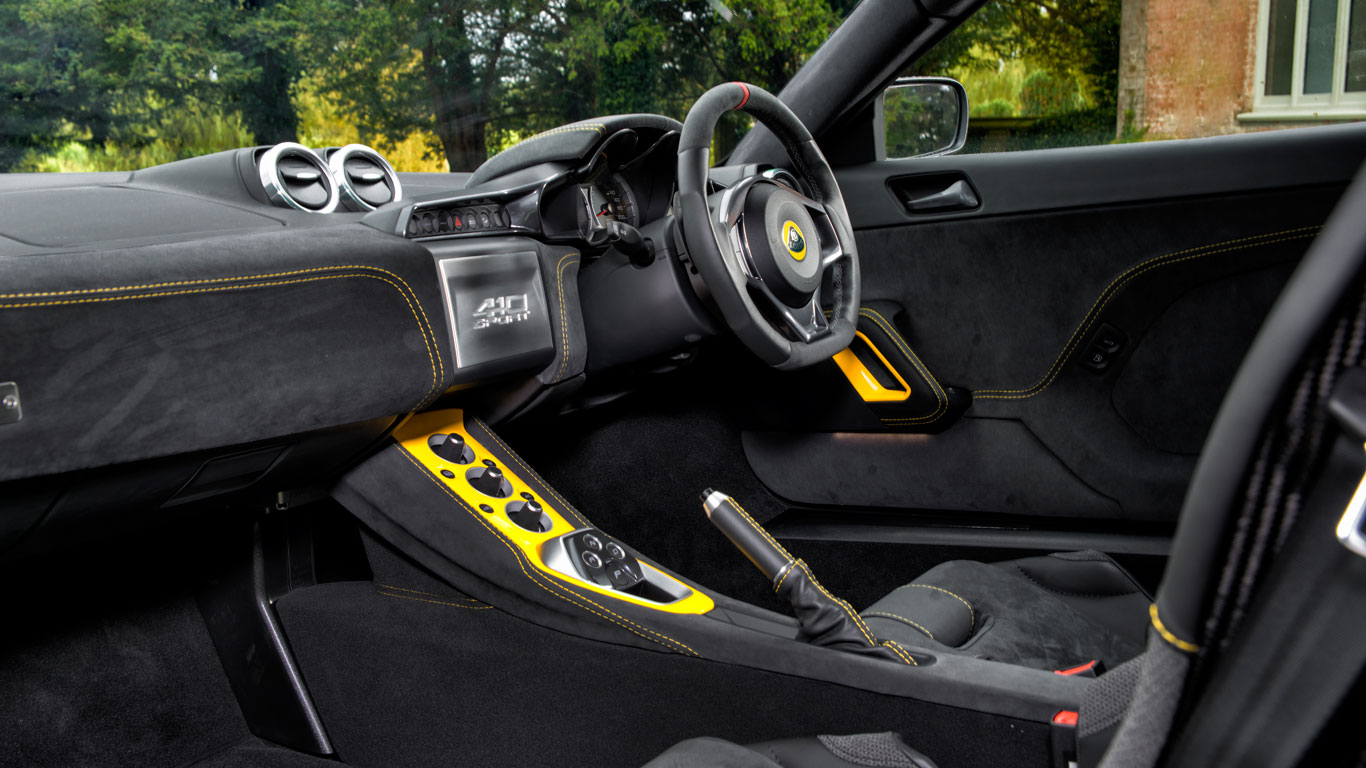
Lotus says it’s worked hard to improve the perceived quality of the interior – the sort of thing that contributes to the Porsche Cayman being the default sports car for so many buyers. While the Evora 410’s interior, which is manufactured by hand at the firm’s Hethel factory in Norfolk, isn’t exactly luxurious, it does feel special.
You sit behind the thick-rimmed, flat-bottomed wheel, while all the controls are easy to find and simple to operate. Colour-coded stitching adds a sporting element, while a large aluminium facia takes the place where there would normally be an infotainment system. It’s far from drab.
We need to talk about the price
OK, the Lotus Evora 410 isn’t cheap. It’ll set you back £82,000 – that’s £10,000 more than the Evora 400, around £18,000 more than the Cayman GT4 before it sold out, and well within Porsche 911 territory.
What about extras?
Not everyone will want an entirely stripped-out Evora. For those people, it’d be wise to save money and opt for the £72,000 Evora 400 instead, but that has a 10hp deficit and lacks the cachet of the 410’s badge. If you do want to add extra weight to the 410, you can ask Lotus to fit a radio, air-conditioning, extra sound-deadening and even leather seats. Seems a bit daft to us…
Should I buy one?
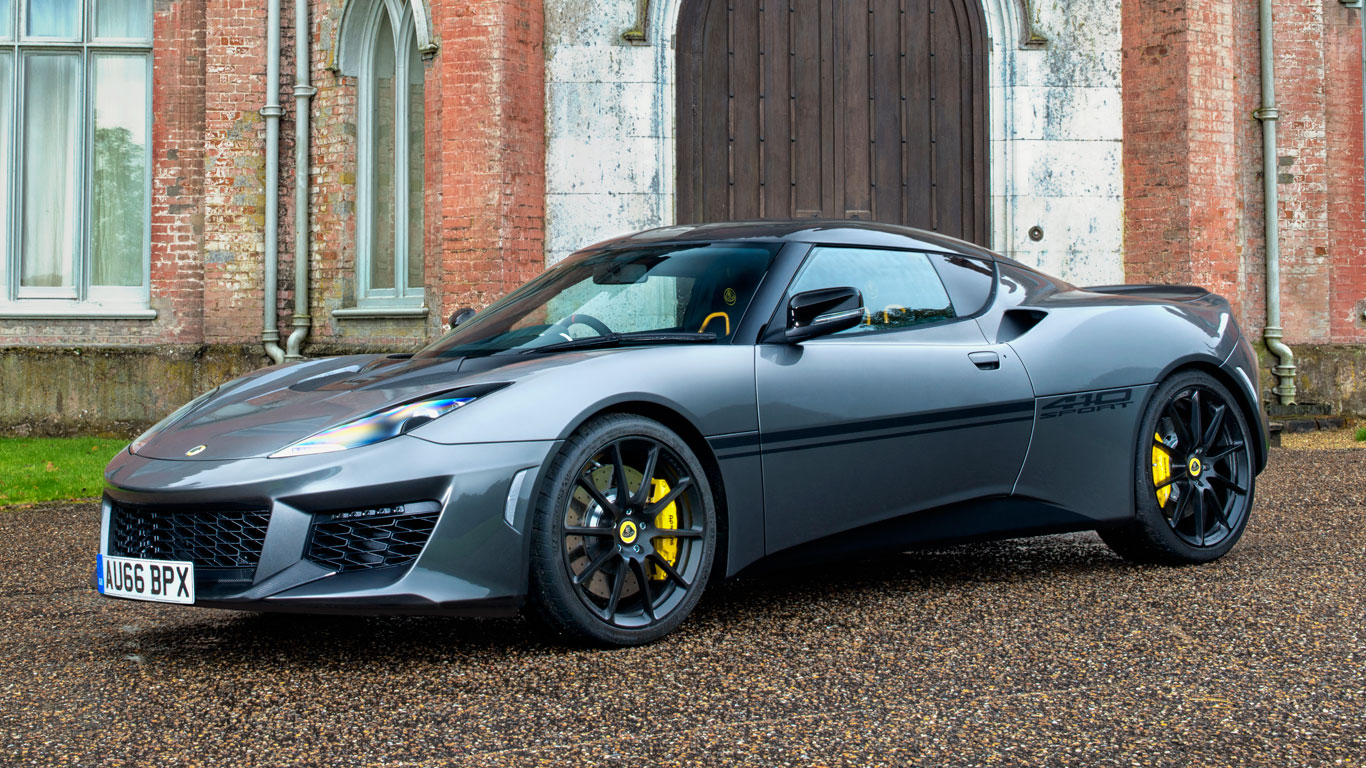
At such a huge chunk of money for a car without a radio as standard, only the most serious of enthusiasts will be able to justify a Lotus Evora 410. If you’re after a daily driver, or a car for cross-continent road trips, the lesser Evora 400 or a rival (ahem, Porsche) will be a wiser bet.
However, if you’ve got the cash to spend on an extremely competent track car and B-road blaster, the Evora 410 is one of the most satisfying cars serious drivers can buy. And you’ll still be able to use it for the odd weekend away. We’d approve.